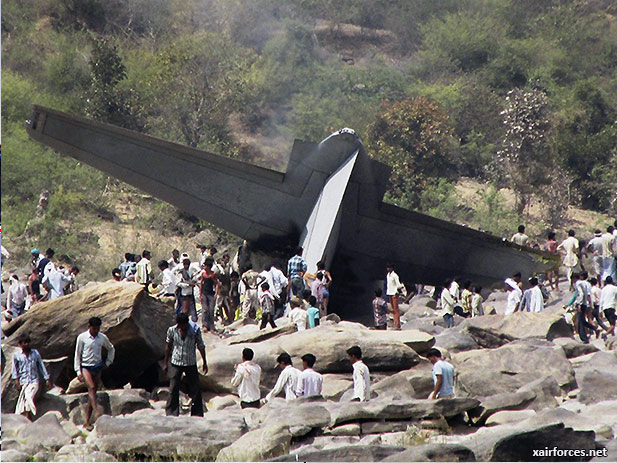
Indian Air Force Investigates C-130J Crash

A stunned Indian air force (IAF) is struggling to piece together perhaps its most perplexing accident. On March 28, the second C-130J Super Hercules in a two aircraft formation fell out of the sky and crashed on a river bank in central India.
Among the five men killed in the crash were the squadron’s second-in-command and a trainee pilot who was being supervised on low-level maneuvers.
Several factors have dumbfounded the air force: the aircraft was virtually new compared to the rest of the transport fleet. It is easily the air force’s most advanced transport plane, specially kitted for special operations and low-altitude maneuvering. And this accident is only the second crash of the J-model aircraft — the last was a Norwegian Super Hercules that ploughed into a mountain in 2012.
“A fully proficient crew was flying a new and advanced aircraft in tip-top condition. There were no weather related factors, and no distress call. There is no visible reason why this aircraft crashed,” says an officer at air headquarters. “Margins of error are strictly enforced in all training flights. This may be the most difficult accident for us to digest in recent history.”
Both Lockheed-Martin and the U.S. Air Force have offered to help the Indian air force with the investigation. In a statement a few hours after the crash, the aircraft’s manufacturer said, “We are saddened to hear the news of the C-130J accident in India today, and our thoughts and prayers are with the crew and their families at this time. We are ready to provide assistance as requested by the Indian Air Force.”
The aircraft’s flight-data and cockpit-voice recorders, both reported to be damaged, have been sent to Lockheed Martin via the U.S. embassy. India’s air attache in Washington D.C. will coordinate directly from the U.S.
An officer with the U.S. Embassy in Delhi confirmed that its defense wing was in touch with the IAF and had also offered to fly in specialists to assist with probing the crash. “Since this is only the second crash of the J type, and the first, and hopefully only one in India, we’ve had a conversation with the IAF about bringing in specialists who can help quickly interpret all the flight and other data to piece together this very tragic accident. We’re standing by to respond to any request from the IAF,” the officer said.
Senior officers at Gwalior air force base in central India, to which the ill-fated C-130J was headed, say the aircraft may have stalled in a steep turn at low altitude, giving its crew no time to recover. Eyewitness accounts included in the air force’s preliminary crash report suggest the aircraft may have grazed a low hill, and may have been on fire when it went down. In such a training scenario, the soft control limits would have been overridden for training purposes and to test pilot skills at low altitude. The IAF has said there doesn’t appear to have been any deviation from standard operating procedure, though conclusive details will only emerge once the investigation is complete.
The C-130J that crashed was one of six aircraft that the IAF began inducting in 2011 on a $1.1-billion deal signed in 2008. The aircraft are based at the Hindon station right outside the country’s capital, and have been part of several recent operations, including the catastrophic floods in North India and the hunt Malaysia Airlines Flight MH370 over the Indian Ocean. In August last year, the IAF also called global attention when it landed one of its C-130Js at the world’s highest airstrip, the Daulat Beg Oldie airfield in north India, located at 16,614 feet. Four months later, in December 2013, the Indian government confirmed orders for six more aircraft.
“While the IAF will conduct a thorough enquiry into the accident to ascertain exactly what led to this accident, the IAF remains committed to provide the best possible equipment and training to our personnel so that they can execute their assigned missions professionally,” said IAF chief Air Chief Marshal Arup Raha in a statement.
In addition to the Indian air force, the C-130J is a platform also under consideration by the Border Security Force, the National Disaster Management Authority and the Indian Navy for its medium range maritime reconnaissance requirement.
Source: aviationweek.com News – 1 April 2014
Photo: The Indian Air Force C-130J Aircraft crash (Photo by IAF)
(1.04.2014)
|